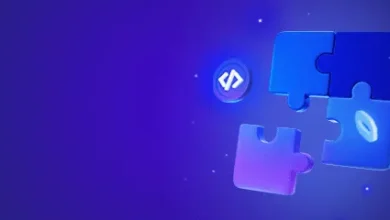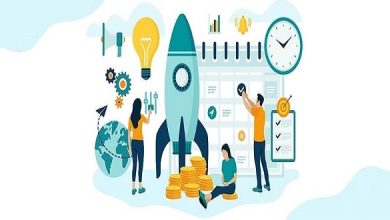History of Demat Account

The introduction of demat accounts revolutionized investing and trading in the financial markets. Today, opening a free demat account app takes minutes on a trading app with free demat account facilities. However, this was not always the case. Demat accounts have come a long way over the decades. Let us explore the origins and evolution of the demat account in India.
What is a Demat Account?
Before delving into the history, it is important to understand what exactly a demat account is. A demat or dematerialized account is one where investors can hold financial securities like stocks, bonds, mutual funds, and ETFs in digital format versus physical certificates. The depository institution provides portfolio holders with online access to check their holdings in a secure manner at any time. Demat accounts eliminated the hassles involved with tangible paper share certificates and certificates of deposits. Now portfolios can be managed efficiently online, and holding transfers or trading can happen seamlessly.
- Origins in the 1990s
The origins of dematerialized accounts date back to the 1990s in India. In 1990, the Depositories Act was passed by Parliament, which would regulate depository institutions where investors could hold digital securities instead of paper certificates. This provided the legal framework for the dematerialization of holdings in the country. In 1996, National Securities Depository Limited (NSDL) was established as the first depository institution in India with nationwide reach. The following year, Central Depository Services Limited (CDSL) also received approval from SEBI to offer demat account facilities. This paved the way for paperless holdings of securities for stock market trading versus the cumbersome physical certificate system.
- Demat Mandate of 1999
A major transformation came in 1999 when the Demat Mandate was introduced by SEBI. The mandate required that all companies listed on major stock exchanges like the NSE and BSE compulsorily offer dematerialized shares. Investors were also required to hold shares only in demat form if they wanted to sell in the open market. This initiated the phase-out of paper share certificates. By 2006, around 97% of the companies listed were dematerialized. Now, practically all investor holdings are in demat form, doing away with physical certificates entirely.
- Rise of Online Trading in the 2000s
In the early 2000s, online trading was launching in India, allowing retail investors to trade online versus traditional brokerages. Online trading portals like ICICIDirect, Sharekhan, and Kotak Securities emerged, which allowed routing orders electronically to the exchanges from personal computers. As investors shifted from offline to online trading, they also needed demat accounts to hold the shares in digital format so trades could settle smoothly. Trading portals partnered with depositories like NSDL and CDSL to offer bundled demat account openings along with trading accounts. Demat accounts saw mass adoption as retail trading activity increased.
- Mobile trading and eKYC integration
By 2010, mobile trading apps started gaining popularity, allowing investors to trade on the go using smartphones versus being deskbound. With mobile tradiang, investors needed online access to not just trading but also their demat holdings. Depositories enabled mobile-friendly platforms to view demat account positions in real-time. eKYC, or electronic KYC, integration in the 2010s also simplified the account opening process to minutes versus days earlier. Using Aadhar and PAN linkages, online verification became instant. This allowed trading apps to offer free demat account opening along with trading accounts via a completely paperless process using mobiles and tablets.
- The Current Era of Seamless Investing
Today, opening a demat account is seamless and fully integrated into trading apps and investment platforms. Retail investors can open a free demat account via a trading app with free demat account facilities in under 5 minutes. Online verification, bank linkages for transfers, and holding securities in dematerialized format are the norm. Thanks to the integration of trading, demat, and bank accounts, the investing process is smooth, from account opening to funding, trading, holding securities, and seamless settlements after selling. Demat accounts are now ubiquitous, with around 50 million retail demat accounts in India today. From cumbersome paper shares in the 90s, demats are now seamlessly integrated into investors’ digital portfolios and platforms.
- Rise of Discount Brokers
In the 2010s, discount brokerages like Zerodha, Upstox, and 5paisa gained popularity by offering low-cost flat-fee trading options versus traditional full-service brokers. As discount brokers focused on tech and online trading, they provided easy demat account opening integrated with trading accounts to attract digitally-savvy investors looking for minimal commissions. This further boosted retail participation.
- Allowing foreign investors
In the 2000s, regulations eased to allow more foreign investors to participate in Indian markets. Foreign institutional investors (FIIs) and foreign direct investors (FDIs) investing in India also needed demat accounts to buy Indian shares and bonds. Special types of demat accounts, like NRE and NRO, were introduced by depositories to cater to non-resident Indians (NRIs). This expanded the demat user base.
- Rise of MFs and SIPs
Beyond direct equities, mutual funds (MFs) and systematic investment plans (SIPs) also gained popularity in the 2010s. While MF units are held in demat format, SIPs are debited from linked bank accounts on a scheduled basis. Thus, demat and banking integration helped propel monthly SIPs as an investment option.
- Financial inclusion of retail investors
By reducing account opening paperwork, initial funding requirements, and digitizing the process, demats helped bring financial inclusion to retail investors across socio-economic profiles. Investing became viable for the masses versus just high-net-worth individuals earlier, thanks to the demat account revolution.
Conclusion
In conclusion, demat accounts have come a long way from their origins in the 1990s as a novel concept for paperless holdings. Policies like the Demat Mandate and tech integration spurred mass adoption as online investing gained popularity. Today, demat accounts are an integral and necessary part of investing. Opening a demat account is easy thanks to eKYC, which is entirely integrated into trading apps and investment platforms, providing a seamless experience right from signup. While the process is easy now, it took decades of policy, tech innovation, and integration by brokers, depositories, and regulators to reach this efficient digital state for investing in Indian markets.




